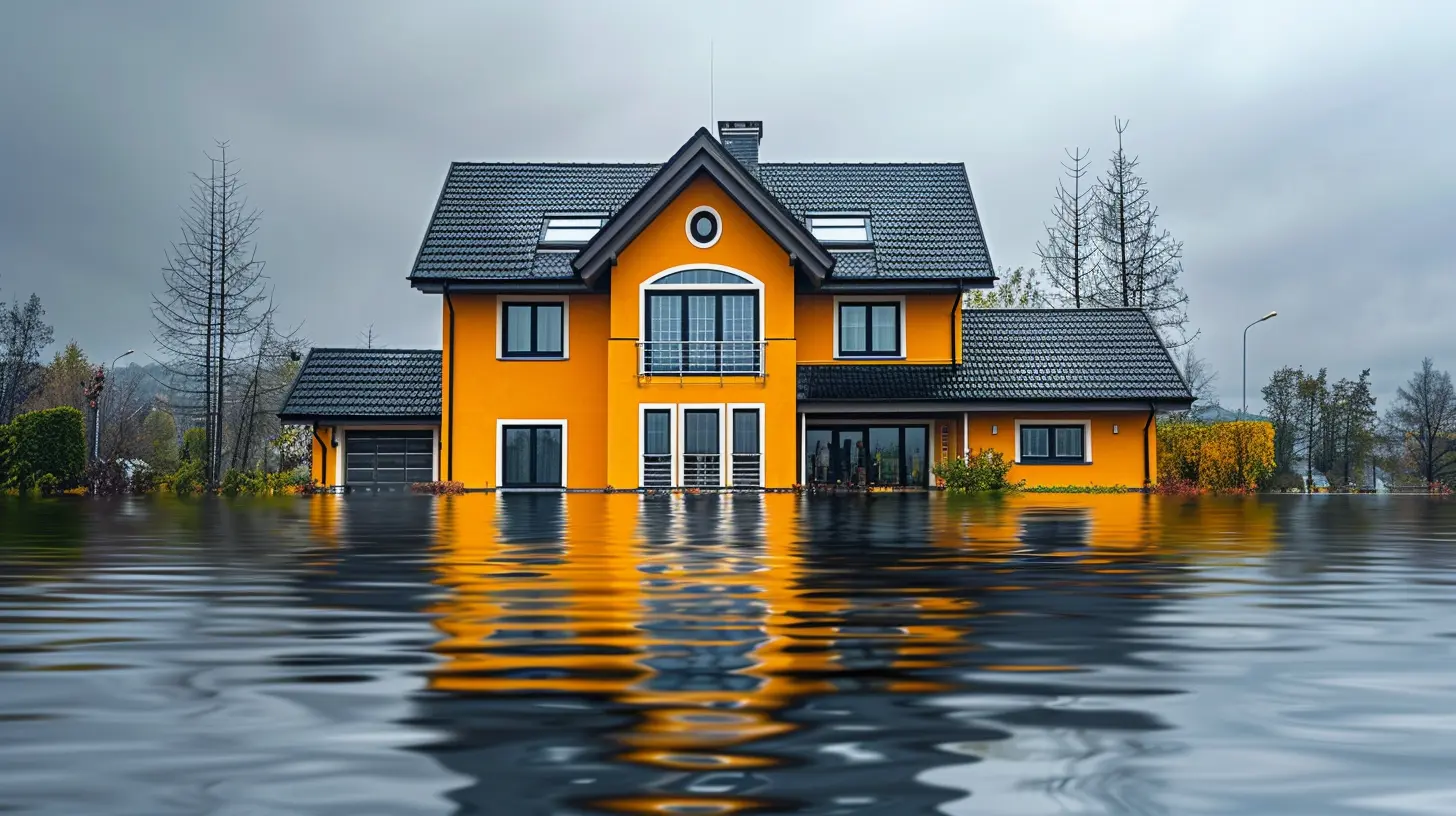How to Lower Your Homeowners Insurance Premiums Without Sacrificing Coverage
11 October 2025
Let’s be real—homeowners insurance isn't exactly the sexiest part of owning a home. But it sure is important. It protects your biggest investment and keeps you from losing sleep at night. The thing is, premiums can creep up year after year, and before you know it, you're handing over way too much cash for a policy you barely think about.
Here's the good news: You don't have to choose between saving money and having solid coverage. It’s totally possible to lower your homeowners insurance premiums without sacrificing the protection your home deserves. At the end of the day, it’s all about making smart moves, understanding what affects your rates, and taking control.
Grab your coffee (or wine—no judgment here), and let’s dive into how you can cut costs without cutting corners.
1. Understand What You're Paying For
Before you even think about reducing your premiums, you have to know what’s in your policy. That means reading the fine print. Yeah, we know—it’s not as riveting as a Netflix binge, but it’s crucial.Your premium is influenced by several things:
- The value of your home and belongings
- Your deductible amount
- The level of liability coverage
- Your home's location and risk factors (flood zones, crime rates, etc.)
- Safety features and upgrades in your home
You’re basically paying for risk management. The more risk your insurer thinks you're carrying, the more you pay.
So start by asking yourself: Are you over-insured in some areas? Or under-insured somewhere that actually matters more? Knowing where you stand is the first step to making smart savings.
2. Raise Your Deductible (If It Makes Sense)
Let’s talk deductibles. This is the amount you pony up before your insurance kicks in during a claim. Most people go for a lower deductible because it's easier on the wallet when disaster strikes. But here’s the catch: lower deductible = higher premium.So what’s the trick? Raise your deductible—just enough to save on your premium but not so high that you’re risking financial strain if something goes wrong.
Say your deductible is $500 and your premium is $1,200 a year. If you raise it to $1,000, you could save a few hundred bucks annually. That adds up fast, especially if you rarely file claims.
Just be sure you’ve got that deductible amount stashed away in an emergency fund. Otherwise, this tip could backfire.
3. Bundle Your Policies
Do you have auto insurance with one company and homeowners with another? That’s like going to two gas stations to save three cents a gallon. Bundling your policies—getting both home and auto (or even life insurance) from the same insurer—can score you serious discounts.Many insurers offer bundled savings of 10% to 25%. Plus, it simplifies your life. One company, one bill, one less password to remember.
The key? Make sure you’re actually saving money. Sometimes, bundling sounds like a deal, but the prices for individual policies might be inflated. So, always compare bundled vs. separate costs before you commit.
4. Improve Your Home’s Security
Insurance companies love safe homes. Why? Because safe homes have fewer claims.Simple logic.
So if you invest a little in security, many insurers will reward you by lowering your premium. Here are some upgrades that could earn you discounts:
- Monitored alarm systems
- Smart smoke detectors and carbon monoxide alarms
- Deadbolts and reinforced doors
- Security cameras (especially those connected to an app)
Think of it this way: A few hundred bucks in security upgrades could save you thousands over time. That’s a win-win—your home’s safer, and your wallet’s happier.
5. Make Your Home Disaster-Resistant
Depending on where you live, natural disasters might be a big concern. Earthquakes in California. Hurricanes in Florida. Tornadoes in the Midwest. You get the drift.Insurance companies factor in these risks. But if you can prove your home is built to withstand those forces of nature, you could slash your premiums. Consider upgrades like:
- Storm shutters or hurricane-resistant windows
- Reinforced roofing
- Earthquake retrofitting
- Proper drainage to prevent flooding
Yes, some of these improvements are pricey up front. But over time, they can shrink your premiums and boost your home’s value, too.
6. Don’t File Small Claims
This one might sound counterintuitive—after all, you’re paying for coverage, right? Shouldn’t you use it?Well… yes and no.
Every time you file a claim, it gets recorded on your insurance history. The more you file (especially small ones), the riskier you look. And you guessed it—riskier people get charged more.
If your fence falls in a windstorm and it costs $400 to fix, it might be better to eat that cost instead of filing. Save your claims for the big stuff: fires, break-ins, serious water damage. That way, your insurance history stays squeaky clean, and your premiums stay low.
7. Shop Around Every 1–2 Years
Loyalty is great when it comes to relationships and your favorite pizza place. But when it comes to homeowners insurance? Not always.Insurance companies count on your inertia. They quietly raise your premium a little each year, assuming you won’t notice or switch.
So don’t be shy—shop around every year or two. Compare quotes. Use online tools or work with an independent agent who can check multiple companies for you.
Sometimes your current insurer will even match a lower quote to keep your business. But you won’t know unless you ask.
8. Maintain Good Credit
Yep, your credit score doesn’t just affect loans—it can influence your insurance premium, too. Insurers use something called an “insurance score,” which is based partly on your credit history.Why? Because, statistically, people with better credit tend to file fewer claims.
It’s not exactly romantic, but it’s reality.
So, pay your bills on time, keep credit card balances low, and check your credit report for errors. Even a small improvement in your credit score could lead to lower rates.
9. Review Your Coverage Annually
Life changes—and so should your insurance coverage.Did you sell that pricey watch you had insured? Finish paying off your mortgage? Add a new expensive appliance? Renovate your kitchen?
All of these things affect your insurance needs.
So make it a habit to review your policy once a year. Update your coverage to reflect what you actually own and need. You might find you’re paying to insure stuff you don’t even have anymore.
And if you’ve added value to your home through renovations, make sure that’s reflected, too. Otherwise, you might be underinsured in the event of a big loss.
10. Ask About Discounts You Might Be Missing
Here’s a crazy idea: Just ask.Insurance companies don’t always shout about all the discounts they offer. But if you call them up and ask what you qualify for, you might be surprised.
Common discounts include:
- Being claim-free for a certain number of years
- Being a non-smoker
- Having good credit
- Being a senior citizen or retiree
- Having a new roof, plumbing, or electrical updates
It never hurts to ask. The worst they can say is no, right?
11. Avoid Over-Insuring Personal Belongings
Be honest—do you really need $100,000 in jewelry coverage if you wear the same necklace every day?Many people overestimate the value of their belongings and end up paying extra on personal property coverage. That’s money you could be using elsewhere.
Take a home inventory—photos, receipts, and values of what you own. Then tailor your coverage accordingly. You want protection, not padding.
12. Consider Group or Association Discounts
Are you in a trade union, alumni association, or even just a big employer? You might qualify for group discounts on homeowners insurance.Many insurers offer reduced rates for members of certain professional or community organizations. Sometimes these are exclusive, and most people never know they exist.
It’s a little like having a backstage pass for savings. So check with your employer or local groups and see what’s out there.
Final Thoughts: It’s All About Being Smart, Not Cheap
Lowering your homeowners insurance premiums doesn’t mean playing a risky game with your coverage. It’s about being intentional, informed, and proactive.Think of it like fine-tuning your favorite recipe. The ingredients are mostly the same—you’re just adjusting the seasoning to get it just right.
So go ahead. Take these tips, tweak your policy, talk to your insurer, and keep more money in your pocket. You’ve got this.
all images in this post were generated using AI tools
Category:
Homeowners InsuranceAuthor:

Kingston Estes
Discussion
rate this article
1 comments
Dulce McGovern
Great tips! Saving money feels empowering.
October 18, 2025 at 11:52 AM

Kingston Estes
Thank you! I'm glad you found the tips helpful. Saving money definitely boosts confidence!


